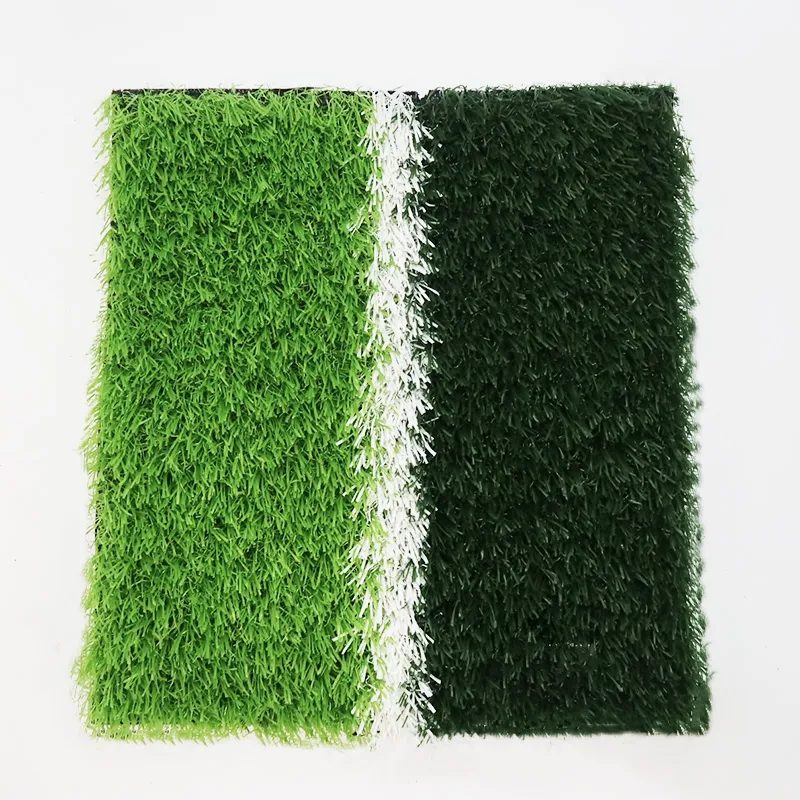
- Afrikaans
- Arabic
- Belarusian
- Bengali
- Czech
- Danish
- Dutch
- English
- Esperanto
- Estonian
- Finnish
- French
- German
- Greek
- Hindi
- Hungarian
- Icelandic
- Indonesian
- irish
- Italian
- Japanese
- kazakh
- Rwandese
- Korean
- Kyrgyz
- Lao
- Latin
- Latvian
- Malay
- Mongolian
- Myanmar
- Norwegian
- Persian
- Polish
- Portuguese
- Romanian
- Russian
- Serbian
- Spanish
- Swedish
- Tagalog
- Tajik
- Thai
- Turkish
- Turkmen
- Ukrainian
- Urdu
- Uighur
- Uzbek
- Vietnamese
artificial grass football field
Dec . 04, 2024 19:57 Back to list
The Rise of Artificial Grass Football Fields Revolutionizing the Game
In recent years, the world of sports has seen a remarkable transformation with the increasing adoption of artificial grass in football fields. This innovative surface has not only changed the aesthetic appeal of playing fields but also has significantly enhanced the performance and safety of players. As the popularity of artificial grass football fields continues to grow, it is essential to explore the reasons behind this trend, their benefits, and potential drawbacks.
Firstly, one of the most compelling reasons for the rise of artificial grass is durability. Traditional natural grass fields require extensive maintenance, including irrigation, mowing, fertilization, and pest control. These demands can become costly and time-consuming, especially in regions with unpredictable weather conditions. In contrast, artificial grass is designed to withstand various weather challenges, from heavy rain to scorching heat. It can endure high levels of foot traffic without losing its structural integrity, making it an attractive option for schools, colleges, and professional clubs alike.
Furthermore, artificial grass provides a consistent playing surface. Natural grass often suffers from uneven wear and tear and can become muddy or slippery after rain, increasing the risk of injuries. Artificial turf, however, maintains a level playing field regardless of weather conditions. This consistency allows athletes to develop and refine their skills without the unpredictability associated with natural grass fields. The reliable surface also enables teams to train and compete more frequently throughout the year, creating a valuable opportunity for player development.
Safety is another critical aspect where artificial grass shines. Studies have indicated that artificial surfaces can reduce the likelihood of certain types of injuries, such as ankle sprains and tears. Many modern artificial grass systems come with shock-absorbing underlays, which can help minimize the impact on players’ joints. Moreover, the even and stable surface decreases the chances of players tripping or falling due to uneven patches, which is a common concern with natural grass fields.
artificial grass football field

The environmental benefits of artificial grass should also not be overlooked. With the ongoing global water crisis, the need for sustainable practices has become paramount. Artificial grass eliminates the need for extensive watering, thus conserving millions of gallons of water annually. Additionally, it significantly reduces the use of fertilizers and pesticides, resulting in less chemical runoff that can harm local ecosystems. For communities focused on sustainability, investing in artificial grass represents a responsible choice that aligns with environmental goals.
Despite these advantages, the transition to artificial grass is not without its critics. Concerns regarding player health have been raised, particularly concerning the temperature of synthetic turf during hot weather. Some studies have indicated that artificial surfaces can become excessively hot, leading to a potential overheating risk. Furthermore, there have been discussions about the possible chemical composition of certain types of artificial grass, raising questions about long-term safety for athletes, especially children.
Another point of contention is the potential impact on the local environment. While artificial grass does reduce the need for watering and chemicals, it can create runoff issues during heavy rains, as well as contribute to plastic pollution since most synthetic turfs are made from non-biodegradable materials. Communities need to consider these factors and ensure proper drainage systems are in place to mitigate any adverse effects.
In conclusion, the rise of artificial grass football fields represents a significant evolution in the way the game is played and enjoyed. With their durability, safety features, and environmental benefits, these synthetic surfaces offer a practical alternative to natural grass. However, as with any innovation, it is essential to weigh the positives against potential drawbacks. As technology continues to advance, the future of artificial grass may well hold even more promising solutions that address current concerns while enhancing the beautiful game for generations to come.
-
The Benefits of Artificial Turf for Indoors
NewsJul.15,2025
-
How Artificial Grass Suppliers Ensure Quality Products
NewsJul.15,2025
-
Artificial Grass and Pets: A Space for Relaxation
NewsJul.08,2025
-
Balcony & Outdoor Decoration with Artificial Grass
NewsJul.08,2025
-
Best Indoor Artificial Grass for Home
NewsJul.07,2025
-
Best Pet Turf for Dogs: Safe & Durable Artificial Grass Options
NewsJul.07,2025
Products categories









